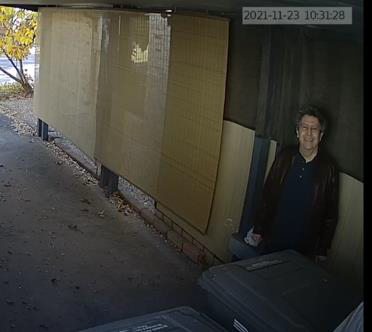Almost by accident, I stumbled across an unexpected wrinkle in Subchapter B of Chapter 73 of the Texas Civil Practice and Remedies Code, also known as the Defamation Mitigation Act (DMA), which states:
“A person may maintain an action for defamation only if the person has made a timely and sufficient request for a correction, clarification, or retraction from the defendant.”
In other words, I couldn’t sue Tommy for libel unless I first gave him a chance to retract his false accusation. And my request for a retraction had to be “timely,” which meant that I had to do it within a year.
The DMA also said that I could not collect punitive damages unless I requested a retraction within 90 days, which meant that I had to ask Tommy to “take it back” by August 23, 2022. If I didn’t seek a retraction by that date, I could still sue him for libel, but I couldn’t collect any money. And what would be the point of that?
But I wondered: What exactly would qualify as a “retraction” in this situation?
According to the DMA, a retraction must be published “with a prominence and in a manner and medium reasonably likely to reach substantially the same audience as the publication complained of.” In other words, a newspaper can retract a libelous statement that it originally published on page three by publishing a retraction on page three in a later issue. But how could a libelous statement that was originally “published” in a lawsuit be retracted?
I had to send Tommy a retraction request to satisfy the requirements of the DMA. Figuring out how to retract his accusation was Tommy’s problem.
The Retraction Request
I realized that Tommy wasn’t the only person from whom I should be seeking a retraction.
In the signature block at the end of the counterclaim in which Tommy had accused me of exposing myself, I saw that the document was technically submitted by Tommy’s law firm, Scheef & Stone (S&S), and that Tommy had signed the counterclaim as “Attorney for Defendant.” So it seemed to me that the parties who should be legally responsible for Tommy’s reckless claim were not only Tommy himself, but also his employer and the client on whose behalf he had libeled me.

And so, on June 28, 2022, I sent this simple, one-paragraph, three-sentence letter to Tommy, S&S, and Sonia:
“In the counterclaim that you filed against me on May 25, 2022 (cause #471-01040-2022), you said: ‘He simply seems to enjoy exposing himself to her security cameras.’ The word he obviously refers to me, but I have never exposed myself in public or to anybody’s camera in my entire life. I would appreciate an apology and a retraction of that false, defamatory, insulting statement, which is a shameful lie.”
But how could I prove that they had all received the letter? Would they claim I never sent them a retraction request, which would mean that I couldn’t sue them for libel? Since I had never done anything like this before, I sent the letter to all three parties both by Certified Mail and by Priority Mail. It was the only way to be sure.
As it turned out, the receptionist at S&S signed the Certified Mail receipts for Tommy and S&S, so I had proof that they had received them. I saw the mailman leave a Certified Mail sticker on Sonia’s door, and I watched her retrieve it – but she never picked up my letter from the Post Office, and eventually it was returned to me. Luckily, I had sent her the same request by Priority Mail, and I had the tracking info to prove that the USPS had left it in her mailbox.

Tommy never did reply to me – but the next day, after he received my Priority Mail, he fired off an email to Robert, ostensibly because ethics rules forbade him from communicating directly with someone who was represented by an attorney. (I later learned that Tommy honored the fine points of ethics rules only when it suited him. But that’s another story.)
Tommy thought it was comical that I had spent more than $25 to send my letters via Priority Mail. He wouldn’t learn until the next day that I had spent an additional $20 to send the same letters via Certified Mail, which I guess he must have thought was even funnier.
In his email, Tommy asked Robert to help me understand that when he said I had “exposed myself,” he actually meant that I was “evincing conspicuousness.” That made perfect sense to me. I mean, haven’t we all had the experience of someone getting upset when we accused them of exposing themselves, and they refused to understand that all we meant was that they were evincing conspicuousness? Some people just don’t get it.

I never did receive a retraction from Tommy, or from S&S, or from Sonia. The ironic thing about that is I probably wouldn’t have proceeded with a lawsuit if they had retracted their accusation, because the DMA would have precluded me from collecting punitive damages. As a lawyer, Tommy was surely aware of that fact.
A cynic might suggest that Tommy and his firm, Scheef & Stone, didn’t mind the prospect of being sued, because every hour they spent working on a lawsuit would be a billable hour for them. And Scheef & Stone bills their time at a rate somewhere in the neighborhood of $500 an hour.
Damaging my reputation had the potential of turning into a windfall for Tommy the Super Lawyer and his partners at Scheef & Stone.
Document Links
Tommy’s retraction “response”

Leave a Reply